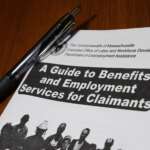Losing your job can be scary. You need your paycheck to cover essentials like housing, food and child care.
If you’re out of work, you may need to get an emergency loan to make ends meet. You can take out a loan without a job, but qualifying for one will be difficult unless you can show another source of income.
Here’s what you need to know about how to get a loan if you don’t have a job.
[Read: Best Personal Loans.]
Can You Get a Loan if You Don’t Have a Job?
“It can be very difficult — or impossible — to get a traditional unsecured loan while being unemployed,” says Jim Triggs, president and CEO at Money Management International, a nonprofit credit counseling agency.
Because income verification is a key step in underwriting loans, you will present a greater risk to lenders if you lack a steady income compared with a borrower who has a stable job. “Part of their approval process is understanding your income and debt-to-income ratio to ensure that you can afford to repay the loan,” Triggs says.
Your debt-to-income ratio is the percentage of your monthly income that goes toward paying your debts.
You may qualify for a personal loan when you’re unemployed, as long as you have good credit and another source of income, says Leslie Tayne, debt resolution attorney and founder and managing director of Tayne Law Group in New York.
If you’re married, for example, a lender may allow you to include spousal income on your loan application, as long as you can use that income to repay the loan. In some cases, you’d need your spouse to be a co-borrower on the loan to include that income.
While you may not be earning a paycheck right now, you could have other sources of income to help you qualify for a loan:
— Self-employment income. This can include self-employment income from a business, side hustle or freelance gig.
— Investment income. You could list income from stock dividends.
— Retirement income. Money from pensions, retirement accounts, annuities or Social Security counts as income.
— Child support and alimony. You can include this type of income if you receive it.
— Unemployment benefits. In some situations, you may be able to list your unemployment income.
Alternatively, some lenders may allow you to show evidence that you have a pending employment offer if you have low income right now.
Still, income isn’t the only factor lenders consider, and it may not even be the most important. Below are other major areas that lenders evaluate:
— Credit history. “Credit underwriting varies by lender, but your credit score and credit report are major deciding factors for lenders because they are an accurate method for determining risk,” Tayne says. Your credit profile tells lenders how likely you are to pay back a loan — the better your credit, the less risky you are as a borrower. A low credit score, plus collection accounts, bankruptcies or other negative marks, will make approval harder, especially if you don’t have a steady income.
— Bank accounts. Even if you don’t have a job and an income, a cash cushion in the bank can be enough to prove that you can repay your loan. A solid savings account balance can help you get approved.
— Collateral. If you’re applying for a secured loan, lenders will consider whether you can back the loan with a physical asset, such as your home or car. Collateral could help you offset the risk you present to your lender by not having a job. At the same time, you take on more risk because the lender can seize your collateral if you can’t make payments.
[Read: Best Bad Credit Loans.]
Can I Get a Loan When I’m on Unemployment?
Unemployment benefits may count as income, depending on your lender’s policies. Since unemployment is a temporary source of funds, it may not be considered a reliable, consistent income source for a longer-term loan. You may need to show other sources of income in addition to your unemployment benefits to qualify for a loan.
Should I Consider a No-Income Loan?
If you can’t qualify for a loan based on the income you have (or lack thereof), you may be tempted to pursue a no-income loan. These loans are just what they sound like: Financing that doesn’t require proof of income to qualify. These loans are commonly associated with mortgages — and the no-income, no-job, no-asset loans that contributed to the housing crash of 2008. The federal government has since tightened rules on no-income-verification mortgages.
While a no-income loan might seem like the perfect solution to your problem, tread carefully. Typically, if you are able to find a lender willing to fund a no-income loan, the terms will be less than ideal.
[Read: Best Debt Consolidation Loans.]
How Can You Increase Your Chances of Getting a Loan Without a Job?
Getting a loan without a job isn’t easy by any means, but you can improve your odds of approval in a few ways.
First, set realistic expectations, and apply for a loan you have a good shot at getting. You may not be approved for a large loan amount, and your repayment period may be short.
Know that you may pay higher-than-average interest charges or origination fees to offset your risk.
Start loan shopping with your local credit union or community bank, especially if you have a bank account or loan there. “If you have a longstanding relationship with a bank or credit union, it could help your odds of getting a loan while unemployed,” Triggs says.
Have your income documents organized and ready to go, adds Tayne: “Lenders want to take every precaution they can to avoid lending to customers that are likely to default on their loans, so be prepared to show proof that you have alternate sources of income when applying.”
[CALCULATE: Use Our Free Loan Calculator to Estimate Your Monthly Payments.]
What Can You Do if You’re Not Approved for a Loan?
If you’re not approved for a loan, don’t lose hope, Tayne says. “There are other options out there.”
— Apply with a co-signer. If you lack the credit, the income or the assets to qualify for a loan, a family member or friend with good credit and stable income could co-sign the loan. But co-signing comes with risks for each of you. A co-signer is equally responsible for repaying the debt, and if you don’t make payments, the lender will come after them. Any late or missed payments will harm not only your credit but also your co-signer’s. “Make sure you trust the co-signer and vice versa,” Tayne says. “A loan default would affect both of your credit scores and would also likely place a strain on your relationship.”
— Consider a secured loan. Offering up an asset as collateral may help you get approved for a loan if you don’t have enough steady income to qualify without it. This reduces the lender’s risk because it can seize the asset and sell it to recoup its funds if you fail to repay the debt. For example, you could use a bank account, vehicle or other property to back a personal loan. Certain types of loans also rely on your home as collateral, such as a home equity loan or line of credit. However, you should be sure you can pay the loan back according to the terms, otherwise you risk losing your home to foreclosure.
— Leverage an existing banking relationship. If you already have a bank account or loan with a bank or credit union, talk to a representative about your borrowing options. Smaller community financial institutions in particular may be willing to work with you even if you don’t have a strong income. That’s especially true if you have a good track record with the bank already.
— Borrow from a loved one. You could borrow the funds you need from a family member or friend. If you consider this option, it’s crucial to weigh the potential risks to your relationships against the financial benefits, and to be sure the other person involved is fully comfortable with the risks. If you do decide to go this route, be sure to draft a formal agreement outlining the loan terms, repayment schedule, and any interest to ensure that everyone is on the same page.
More from U.S. News
How to Get a Small Personal Loan
What Is a Good APR on a Personal Loan?
How to Get a Personal Loan With No Income Verification
Can You Get a Loan Without a Job? originally appeared on usnews.com
Update 10/24/24: This story was published at an earlier date and has been updated with new information.











